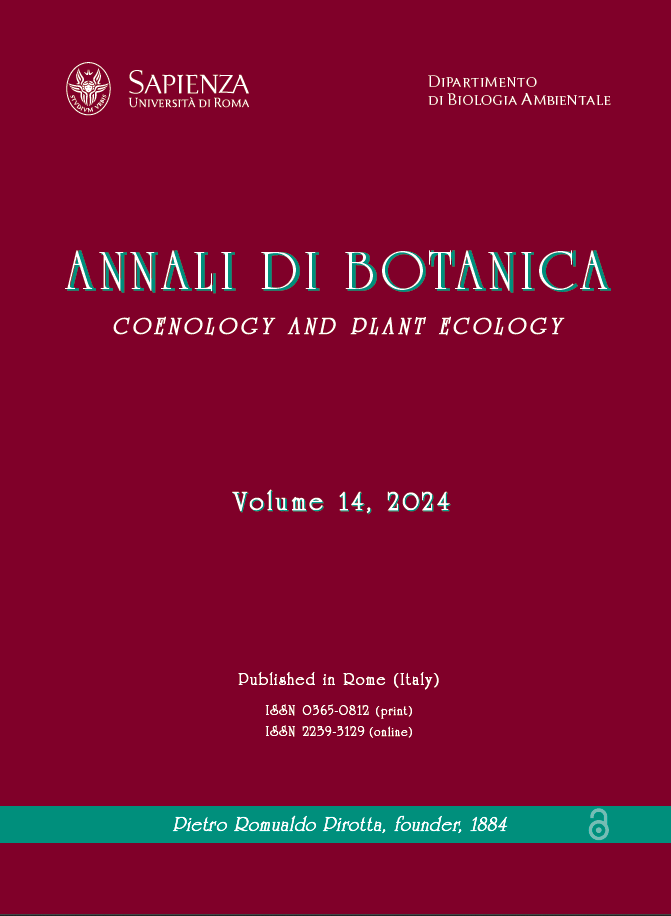Factors influencing the germination capacity of Primula palinuri, cliff-dwelling endemic species of southern Italy
DOI:
https://doi.org/10.13133/2239-3129/18471Keywords:
Vulnerable Populations, Cliff area, Endangered and Rare Species, Germination, AdaptationAbstract
Primula palinuri Petagna is a narrow-endemic plant species native to southern Italy, thriving along the Tyrrhenian coast.
In this study, we compared various aspects of two populations of P. palinuri growing in different sites: one by the sea in the SAC Capo Palinuro (IT8050008) and the other about two kilometres inland in 'La Vaccuta,' SAC Fascia Interna di Costa degli Infreschi e della Masseta (IT8050011).
Seed abundance, size, germination capability, and salt response were analysed. Seed counts and measurements were conducted using image analysis software. Germination responses were assessed at three at three alterning temperatures (6-15°C, 10-20°C, and 15-25°C) in the first experiment. Subsequently, seeds from both sites were subjected to increasing NaCl concentrations (0mM, 50mM, 100mM, 200mM, and 300mM) at 6-15°C and 10-20°C.
Both germination experiments took place in Petri dishes containing filter paper and distilled water.
No discernible differences in capsule and seed sizes were observed between the two sampling sites. However, the study revealed that higher temperatures and elevated salt concentrations negatively affected the germination rate in both populations, particularly in seeds from the innermost site. This suggests a preference for cooler regimes and higher tolerance to saline conditions in the sea-exposed population for optimal germination.
This research delved into the physiological and ecological adaptations of P. palinuri to its current environmental envelope, investigating how seed properties, temperature, and salinity stress influence seed germination potential. The findings provide promising insights that could significantly enhance conservation and management strategies for this species.
The study aimed to compare germination characteristics of two populations of Primula palinuri along the Tyrrhenian coast of southern Italy.
Downloads
Published
How to Cite
Issue
Section
License
Copyright (c) 2024 Ilaria Panero, Vito Emanuele Cambria, davide dell'orco, Federico Fiorentino, Fabio Attorre, Giuseppe Fabrini

This work is licensed under a Creative Commons Attribution-NonCommercial-ShareAlike 4.0 International License.
The copyright for articles in this journal are retained by the author(s), with first publication rights granted to the journal, articles are free to use with proper attribution in educational and other non-commercial setting.

